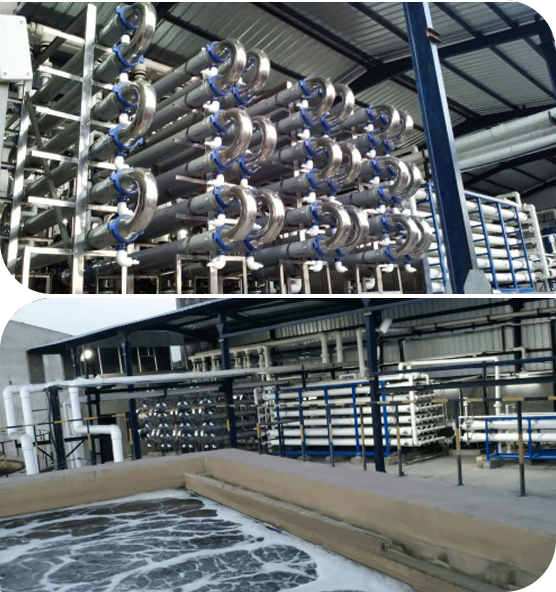
Waterman Engineers Australia is amongst the primary suppliers of Zero Liquid Discharge procedure. A ZLD process is a procedure course of action and that is utilized to remove all of the liquid squander from the technique. The aim of ZLD water treatment is to reduce wastewater economically and deliver potable drinking water that is certainly suit for regular use. Zero discharge system is a complicated treatment method technique that comprises ultrafiltration, reverse osmosis, evaporation and fractional electro deionization. And we've been a very well-acknowledged supplier of ZLD devices.
In many Industries, which include electric power, oil & gas, substances, mining and Other individuals, a great deal of wastewater is produced that should be managed. Conventionally, this discharge of wastewater is done by using a plant outfall to some area water overall body like an evaporation pond, or in some cases deep very well injected. These methods bring on numerous environmental problems by the public in many areas of the whole world, as water is often a scarce resource and its management needs to be monitored. These fears have resulted within the establishment of ZLD procedures by lots of industries to lessen their environmental footprint and boost sustainability. And, Waterman Engineers Australia are finest ZLD suppliers you'll find for this system.
Homes OF ZERO LIQUID DISCHARGE Process
The Attributes of the Zero Liquid Discharge system may vary dependant upon the unique design and technologies employed. Even so, some prevalent Houses of ZLD devices involve:
H2o Conservation: Considered one of the key aims of ZLD programs is usually to conserve water by reducing the discharge of liquid waste in to the atmosphere.
Higher H2o Purity: ZLD devices are intended to generate large-high quality h2o that is definitely cost-free from impurities and contaminants, which makes them ideal for use in many industrial procedures.
Flexibility: ZLD techniques are frequently intended to accommodate a wide range of enter liquid streams, which makes them versatile and appropriate for use in several industries.
Advanced Wastewater Cure: Zero liquid discharge units use Sophisticated wastewater treatment method ways to take away impurities and contaminants from the effluent, producing substantial-good quality h2o.
Waste Reduction: ZLD techniques aid cut down waste by lessening the volume of liquid squander that should be disposed of and by manufacturing a concentrated, strong waste material that could be properly disposed of.
Strength Performance: ZLD methods could be Electricity-intense as a result of high Power specifications of evaporation and various wastewater remedy processes. Nonetheless, developments in technologies are building Zero liquid discharge programs more energy-productive and value-successful.
Waterman Engineers Australia manufactures Zero Liquid Discharge (ZLD) devices intended to clear away all liquid waste, aiming to provide potable drinking water and limit environmental affect. Their ZLD units generally include things like ultrafiltration, reverse osmosis, evaporation, and fractional electro deionization. Crucial systems made use of are Falling Film Brine Concentrators, Compelled Circulation Crystallizer, and Other individuals, using a two-action process of pre-focus and evaporation/crystallization Zld System Manufacturer Zero Liquid Discharge System to Recuperate and reuse h2o. These devices are adaptable to diverse industries, emphasizing h2o conservation, higher h2o purity, squander reduction, and Strength efficiency. Technological specs are assorted and customizable, contemplating aspects like drinking water supply, movement rate, and feed drinking water high quality.
The necessity for Zero Liquid Discharge (ZLD) methods arises in the requirement to handle environmental worries connected to drinking water scarcity and air pollution. In industries like electrical power, oil & gasoline, and mining, large amounts of wastewater are produced. Customarily, this wastewater is discharged into bodies of drinking water, producing pollution and depleting cleanse drinking water resources. ZLD devices intention to attenuate these impacts by treating and recycling wastewater within just the economic approach, thus conserving h2o, lowering waste, and advertising and marketing sustainability.
When contemplating the technical specifications of a Zero Liquid Discharge (ZLD) process, vital facets to center on involve the drinking water supply it's going to treat, the process's movement charge, the caliber of feed h2o, the levels of therapy concerned, the Restoration charge of drinking water, methods for focus disposal, elements of design, running circumstances, and method automation and Handle. These elements make sure the method's performance, durability, and effectiveness in managing and recycling industrial wastewater.
Zero Liquid Discharge (ZLD) vegetation offer you benefits for example h2o conservation, waste reduction, and pollution avoidance, contributing to environmental sustainability. They're relevant in industries like energy technology, oil and fuel, chemicals, and mining, where by they assist in managing industrial wastewater proficiently, reducing the ecological footprint, and complying with demanding environmental laws. These devices are crucial in locations struggling with h2o scarcity and for industries aiming to improve their sustainability and operational efficiency.
FAQs for the Zero Liquid Discharge (ZLD) method usually deal with its operational ideas, Expense-efficiency, servicing necessities, environmental impression, applicability throughout several industries, and regulatory compliance. These thoughts assistance users recognize the system's Added benefits, specialized calls for, and suitability for their precise wastewater management needs.
1. Zero Liquid Discharge (ZLD) is often a wastewater cure method made to get rid of all liquid squander.
two. The technique's factors are affected by the specific industrial procedure, wastewater composition, and regulatory needs.
3. Effluent treatment plants get rid of pollutants from textile effluents to prevent environmental contamination.
four. Positive aspects include water conservation, air pollution reduction, and regulatory compliance.
5. The target is to attenuate environmental influence by recycling water and lowering waste.
6-nine. Effluent treatment crops are levels in wastewater cure: primary (physical separation), secondary (biological cure), and tertiary (Innovative treatment).
10. Device operations consist of filtration, sedimentation, Organic cure, and disinfection.
eleven. Limiting parameters are elements that affect the cure's performance, like pH and contaminant focus.
12. Design considerations contain stream level, effluent composition, and wanted excellent of treated drinking water.